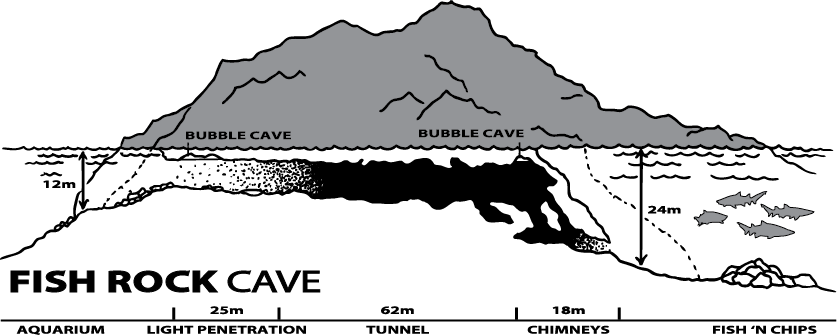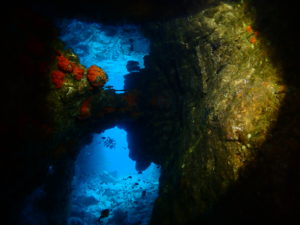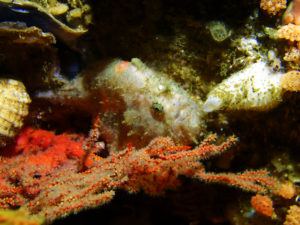
DIVING FISH ROCK CAVE
Divers usually enter through the deeper (24 m) entrance. Navigating the narrowest section of the cave for 15 m and stopping below the 2nd vertical passage (chimney). Divers then ascend 10 m into the main section of the cave. There are 2 main air pockets (bubble caves) in the roof of the cave, the air in these spaces is fine to breathe and is replenished daily by aerated water being pushed into the cave. The main section of the cave is relatively wide and very tall, basically a straight swim out to the other side of the Island. Normally from about half way through the cave the shallow entrance comes into view. This is a stunning sight that draws divers from around the world. The vivid blue glow entering the cave silhouettes the myriad of Marine life, the shallow entrance of the cave is less then 12 m deep allowing divers to stall and enjoy the view before exiting.
LIFE INSIDE THE CAVE
Fish Rock Cave is home to an abundance of marine life. The entrances of the cave are filled with Bullseyes, Wobbygong Sharks and large Black Cod. A little deeper inside the cave you will find Squirrel Fish, Collector Crabs, live Cowrie shells and Glasseye Snapper. The midway point of the cave is home to four different species of Crayfish. Painted Crays are the most common, followed by Slipper Crays and Eastern Green Crays. If you have a good eye you can find a very rare Hairy Reef Lobster, they are bright red and sparsely covered with course red hairs. The cave walls are also covered with life including Gorgonian Fans and Sunflower Corals and hide an array of Macro Creatures. You can find tiny Sea Spiders, Angler Fish, Decorator crabs and a myriad of coloured Nudibranches. The deep end of the cave is used by Cuttlefish to secure their eggs. If you look closely at the semi transparent eggs you can make out the tiny embryos inside. The cave is also visited by huge Marble Rays and Hawksbill Turtles looking for food or just taking a rest in the darkness..


